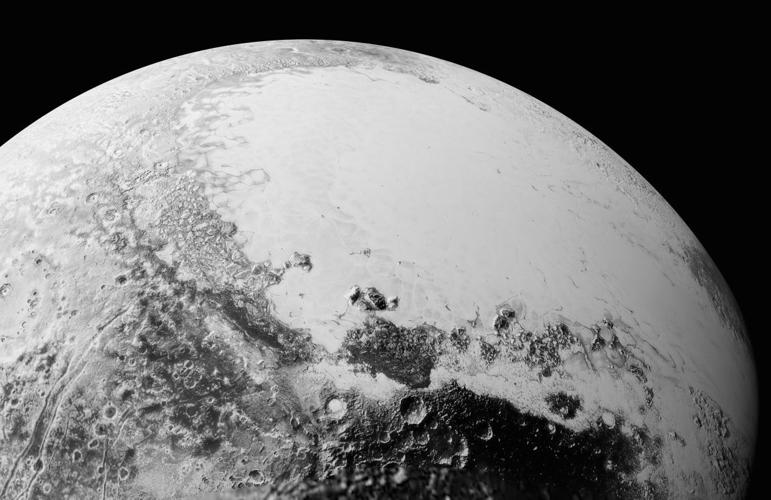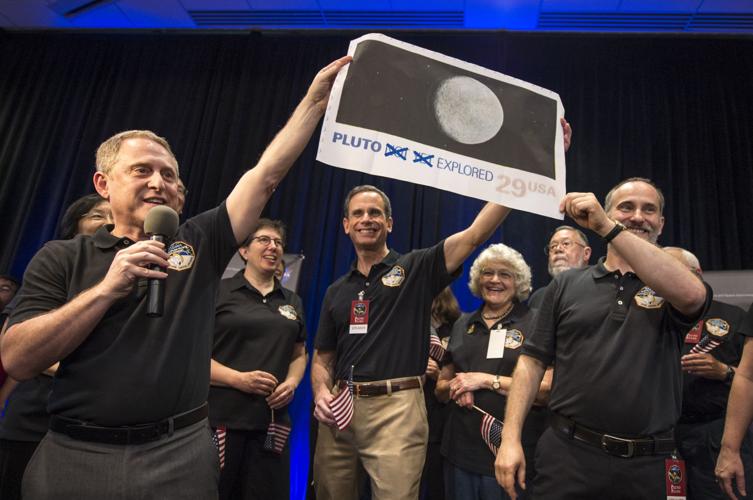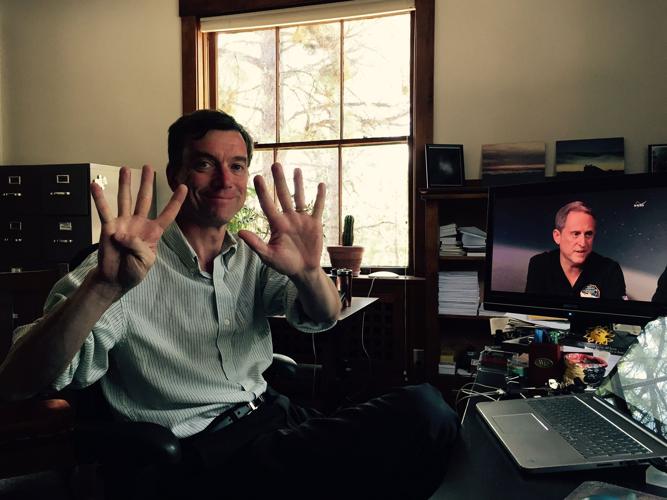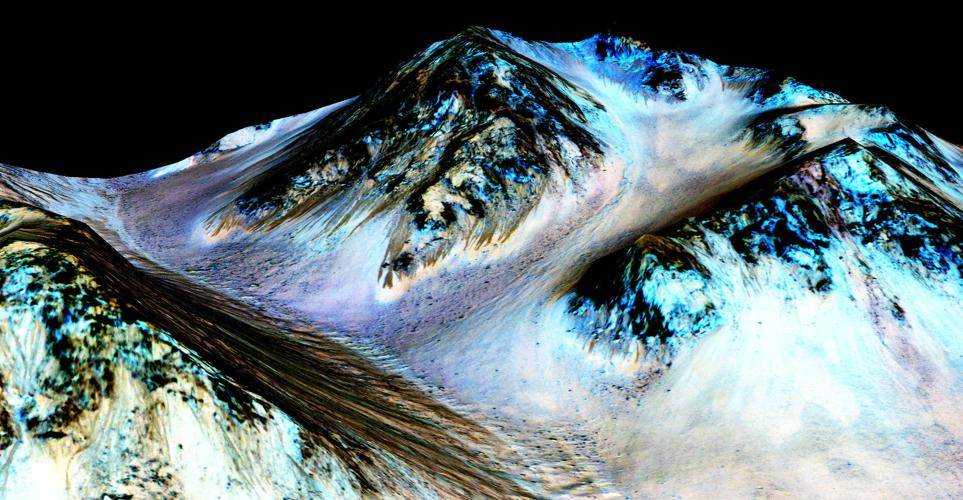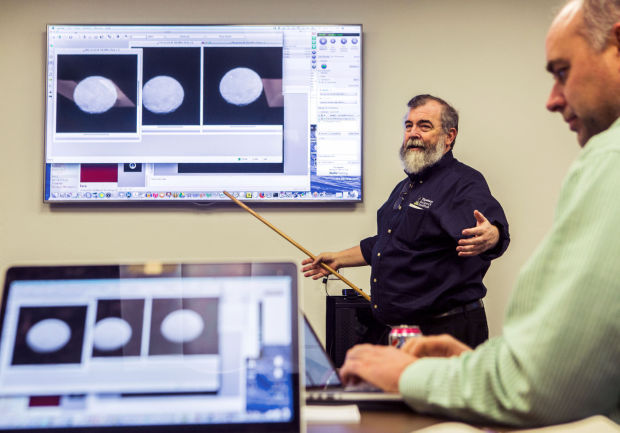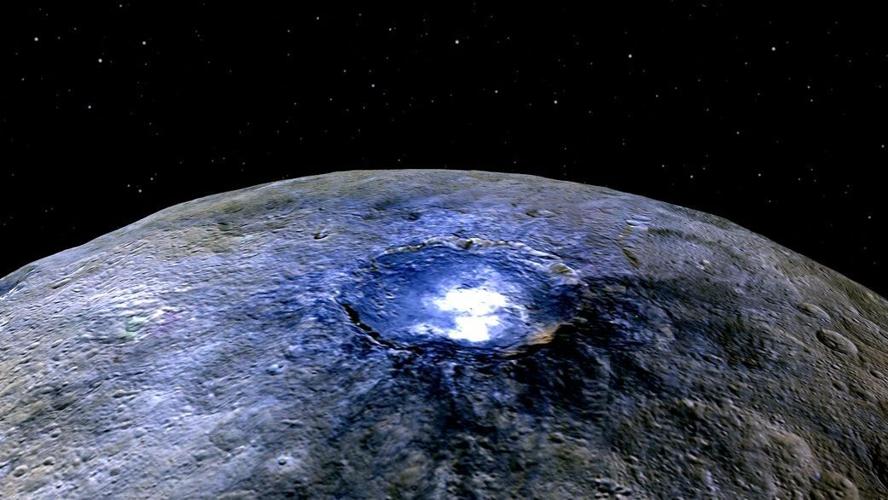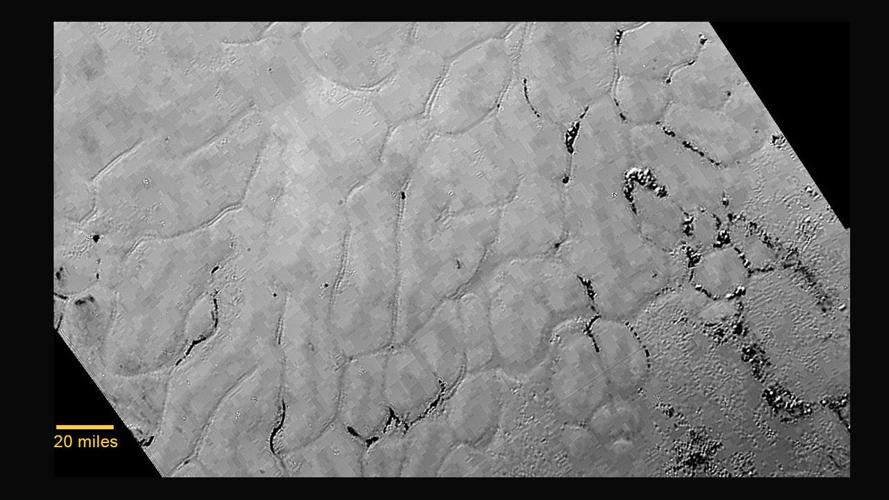Arizona celebrated in July as a NASA spacecraft visited Pluto for the first time and sent back clear pictures of broad plains of frozen gases, rimmed by towering ice mountains.
It was the top science story of the year for Science News, Scientific American and any other general science publication that bothered to make a list.
Arizona scientists had roles in a variety of scientific achievements that made news in 2015.
Pluto
There was joy in Flagstaff as the New Horizons mission unveiled the heart-shaped feature it named “Tombaugh Regio,” in honor of Clyde Tombaugh, who discovered the planet in 1930 from Lowell Observatory.
For mission leader Alan Stern, the big revelation was that Pluto is a dynamic place where ongoing geological activity has erased evidence of craters and contributes to a hazy atmosphere that envelops the planet.
New Horizons continues to transmit data, even as it heads toward possible new targets in the Kuiper belt at the edge of our solar system.
A number of Lowell astronomers and scientists were on the New Horizons team, including co-investigator Will Grundy. In Tucson, UA planetary scientist Veronica Bray helped analyze the surface of Pluto and Tod Lauer of the National Optical Astronomy Observatory, helped with hazards detection and image processing.
The other dwarf
Pluto was not the only dwarf planet on NASA’s exploratory menu this year. Ceres, while overshadowed by Pluto, proved to be fascinating as well and made a number of Top 10 lists, by itself or in the top spot in conjunction with Pluto.
As NASA’s Dawn spacecraft approached Ceres, the largest object in the asteroid belt between Mars and Jupiter, portions of the dwarf planet’s surface glowed white in images from the reconnaissance camera.
By year’s end, as Dawn spiraled into ever closer orbits, scientists, including a team from Tucson-based Planetary Science Institute, hypothesized that the bright features were neither ice nor the street lamps of an alien civilization as some had suggested, but salts left behind by sublimated water ice.
Flowing water on Mars
Another planetary discovery with distinctly Arizona roots made the lists of a number of publications — proof of water flowing on Mars, as first discovered in analyses of images from NASA’s Mars Reconnaissance Orbiter and its HiRISE camera, run by the University of Arizona’s Lunar and Planetary Laboratory.
Alfred McEwen, who leads the HiRISE team, and Lujendra Ojha, who first identified the suspected flows as an undergraduate at the UA, were co-authors on a paper that used HiRISE images and an imaging spectrometer to reveal the presence of salts called perchlorates.
The salts make it possible for water to flow at temperatures well below freezing, said Ojha, who is now a graduate student at Georgia Tech’s School of Earth and Atmospheric Sciences.
Climate
Weather, in particular the rising sea temperatures of the Pacific Ocean, also made a number of Top 10 lists and scientists in Arizona watched the phenomenon closely.
El Niño, the warming of the Pacific that recurs every decade or so, has been in place most of this year.
It contributed to a prolific year for tropical storms and hurricanes in the Pacific, including several that sent surges of moist air into Arizona in summer and fall.
El Niño has historically had its biggest impact on Southern Arizona weather in the winter months. The National Weather Service in Tucson and the UA’s CLIMAS report have set up web pages to track the effects of El Niño on local weather.
The climate pact inked by leaders of 195 nations in France this month also made many lists of significant scientific events. A delegation from the UA, led by Diana Liverman of the Institute of the Environment was on hand.
Liverman and UA climate scientist Don Falk, in an article on the Star’s editorial page, called the pledge to lower greenhouse-gas emissions “a triumph of diplomacy, a testament to decades of careful scientific research and a promise to future generations.”
Ocean viruses
UA researchers also had a role in another big scientific announcement this year — an explosion in the number of marine microorganisms known to exist — the result of a three-year voyage by the Tara Oceans expedition.
UA microbiologist Matt Sullivan and his Tucson Marine Phage Lab cataloged more than 1.4 million genes and identified 5,476 species of viruses as part of the effort.
Milestones
Scientific milestones were also celebrated in 2015.
- The UA School of Anthropology held a series of seminars and celebrations of its 100th year.
- NASA’s Hubble Space Telescope, which has had multiple contributions over the years from astronomers at all of Arizona’s universities, celebrated its 25th year.
Future science
- NASA’s OSIRIS-REx mission, being run from the UA’s Lunar and Planetary Lab, remained on course for a September 2016 launch and its ultimate goal of gathering a pristine sample from an asteroid named Bennu.
- Kitt Peak National Observatory announced new instruments for most of the telescopes being defunded by the National Science Foundation.
- The fate of the McMath-Pierce Solar Telescope remains in limbo, as the National Solar Observatory began moving its operations to Boulder, Colorado, and the Hawaiian island of Maui, where the Daniel K. Inouye Solar Telescope is being built. Polishing of the off-axis mirror for that next-generation telescope was completed this month by the UA College of Optical Sciences.
- At the recently renamed
- Richard F. Caris
- Mirror Lab, scientists from the Steward Observatory cast the fourth mirror for the Giant Magellan Telescope, which officially broke ground in Chile in November. The UA is a partner in the international consortium building that telescope, one of three next-generation giants that promise to revolutionize ground-based astronomy.
- The Large Synoptic Survey Telescope, headquartered in Tucson, held its “first stone” ceremony in Chile in April. That National Science Foundation endeavor will team a unique mirror cast at the UA’s mirror lab with the world’s largest digital camera to map the universe in depth and detail never before attempted.


